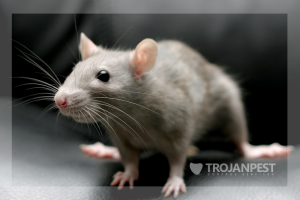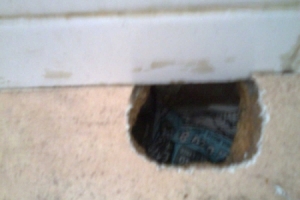



Rat removal Dunstable LU5 01582 226 018
Here at Rat remvoal Dunstable LU5 we provide professional treamtent and eradication programs to deal with your unwanted rodents
we will deal with all issues within domestic or commercial premises internal or external
All treatments carried out are tailored to the infestation were dealing with and all serivces we provide are guaranteed (providing all recommendations are carried out
We offer a same day service and work weekends at no additional cost and being a local company and established in the local area for over 7 years our prices are competative and pride our selves on the hight standard of service we offer
All vans are unmakred to offer customer a discreet service and a detailed report to be left on site with everything you need to know about the service and products used etc
Here at rat removal Dunstable LU5 we always advise you get professional help when dealing with rodent issues as in the long run DIY products can work out more expensive and in most siuations the infestaion becomes worse.
Rat removal Dunstable LU5 would like to offer you a detailed info to rats including life cycle,habitat and other intresting facts to give you some basic knowledge of what your dealing with
We also provide pest control services in luton against mice, cockroaches. bed bugs, fleas, ants, squirrels and many more
Welome to rat removal in Dunstable LU5 if you require assistance in dealing with your unwanted pest call us on 01582 226 018 for a fast, friendly and local service thats professional and competitive
Call
01582 226 018
for areas listed below
Rat removal in Luton LU1
Rat removal in Caddington LU1
Rat removal in Cockernhoe LU2
Rat removal in Streatley LU3
Rat removal in Sundon LU3
Rat removal in Leagrave LU4
Rat removal in Dunstable LU5
Rat removal in Toddington LU5
Rat removal in Harlington LU5
Rat removal in Houghton Regis LU5
Rat removal in Whipsnade LU6
Rat removal in Eaton Bray LU6
Rat removal in Totternhoe LU6
Rat removal in Dudswell HP4
Rat removal in Leighton Buzzard LU7
Rat removal in Cheddington LU7
Rat removal in Burcott LU7
Rat removal in Bedfordshire
A brief description
The Brown Rat ( Rattus Norvegicus) is the most common rat species in the UK also know as, the Norway rat, common rat, Sewer rat.
The fur of rats is mostly brown or dark grey
Fully mature male rats can vary in size, with a head to body length between 200mm-300mm with a similar length for the tail, but average size is around 250mm (10 in) and can weigh between 200g-500g with the average male rat weighing in at around 350g
Female rat can grow to a similar length as their male counterparts but aren’t as well set or bulky so weigh less and average around 250g
Life span and reproduction
Rats can live to 3 yrs however most won’t exceed a life of 12mths or more with most averaging only 9mths-12mths
Life span will depend on many facts such as living conditions, availability of food and the threat from predators and “pest controllers”
Rats are sexually mature at approx 11-12 weeks and can produce up to 5 litters a year. Litter vary in size and the quantity produced will vary between 6-14 but average litter will consist of 6-8 young and with a gestation period of only 21days-22 days it’s easy for a pair of rats and their offspring to produce tens of thousands in only a year.
Habitat and living conditions
The brown is found mostly is built up populated areas but are always found where humans are present. Rats are omnivores which mean they will eat anything! With many food outlets and many areas being heavily populated humans produce a huge amount of food waste and in turn creates a large rat presences.
Rats can nest in many areas, sewers are a good location with oils, excrement, and food waste being flushed and put into the sewage system, rats are also good at borrowing so rats in gardens are also on the increase with the availability of fallen fruit, flowers and vegetables, spillages from bird feeders and tables, composts and waste bags as some councils have still not implemented the use of sealed wheelie bins/ refuge containers.
We have also seen a huge increase of external activity and sighting due to the popularity of “decking”. Decking is easy to install, low maintenance and creates a great use for external activates. The problem is rats have also found this a great location to nest and an ideal breeding ground, being dry and warm, with the use of decking membrane to next under and not easily accessible to human or predators this has help to boost their presence.
Rats are also able to enter properties via open ventilation points around external areas, can gain access to internal areas by digging under decking to gain access to cavity walls, and damaged or uncapped waste points. We have found many customer experience issues when building works have taken place, on occasions toilets have been relocated and waste pipes not have not been capped off so rodents that have access to the waste pipes to properties have an easy route to under floor voids. We have also had many incidents where rats have accessed the properties by chewing the backs of consortia pipes at the rear of toilets that customers have installed in the space under the stairs.
Rats are able to climb and once they have accessed the cavity wall they will be able to gain access to all areas and levels of the property or building and loft space so their presence is not just restricted to ground floor and floor void areas.
How to determine the presents of rats
Rats are nocturnal so they tend to be present when humans aren’t around, late at night when it’s quiet so it’s very unlikely you will come face to face with a rat however there’s many other tell-tales signs.
Food damage is usually the first indication of a rodent problem, missing items, chewed packets, food debris and crumbs strew around floors and in cupboards. Droppings aren’t always easily visible in open areas as they tend to leaving droppings in resting, eating and nesting locations that won’t always be visible or accessible. If you find what you think could be the droppings the best way to tell would be the size, rat droppings are black or brown wet when fresh and hard when dry, they are approx 15mm-20mm in length and approx 5-6mm in width and tapered, with a heavy infestation the urine left behind will produce a full armour a similar smell to ammonia. Other sights of rat activity could be the sound of movement in walls, running in ceiling or floor voids and crewing or gnawing sound. As rats tend to use the same paths when getting around they can leaving signs of wear due to the heavy flow of traffic, tail dragging patches in dusty areas and grease stain (smear makes) a oily dirty residue left around high levels of activity and entry and exit points
Health and disease
Rats are an extreme concern to health as they can carry diseases such as salmonella that can cause excoriating stomach pains and vomiting and can also carry deadly diseases such as weil’s disease that causes severe headaches and without the implement of medical advice can lead to organ failure and even death. Rats can also cause health issues with cats and dogs as if ingested could lead to issues with parasite such as worms.
Treatment
We would always recommend that when it comes to rodent you seek the help of a professional pest company to deal with the rodent issues
The product available to the professional market differ from the products available to for amateur use, many customers chose to deal with the problem them self’s and in most situations, the amount of products brought outweigh the cost of a professional service and usually results in a heavy infestation by the time you admit defeat.
So if you require our help or would like information on the services we provide were here to help and ready to take your call.
